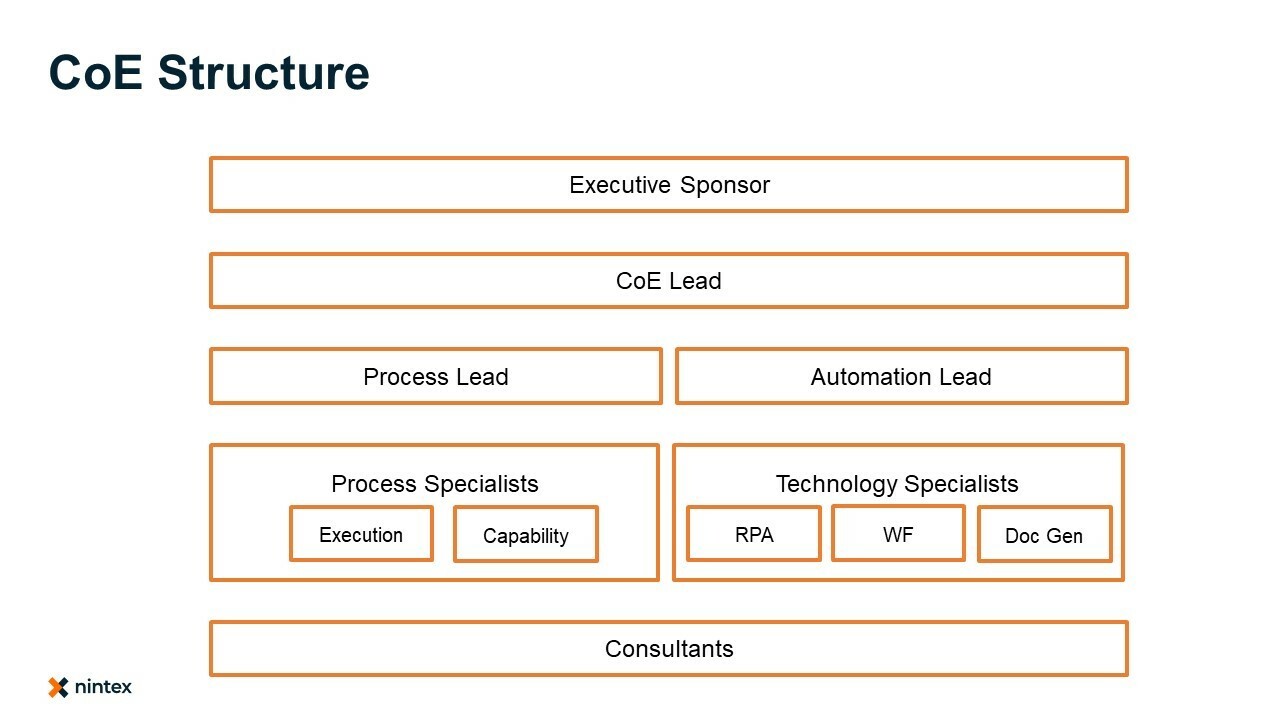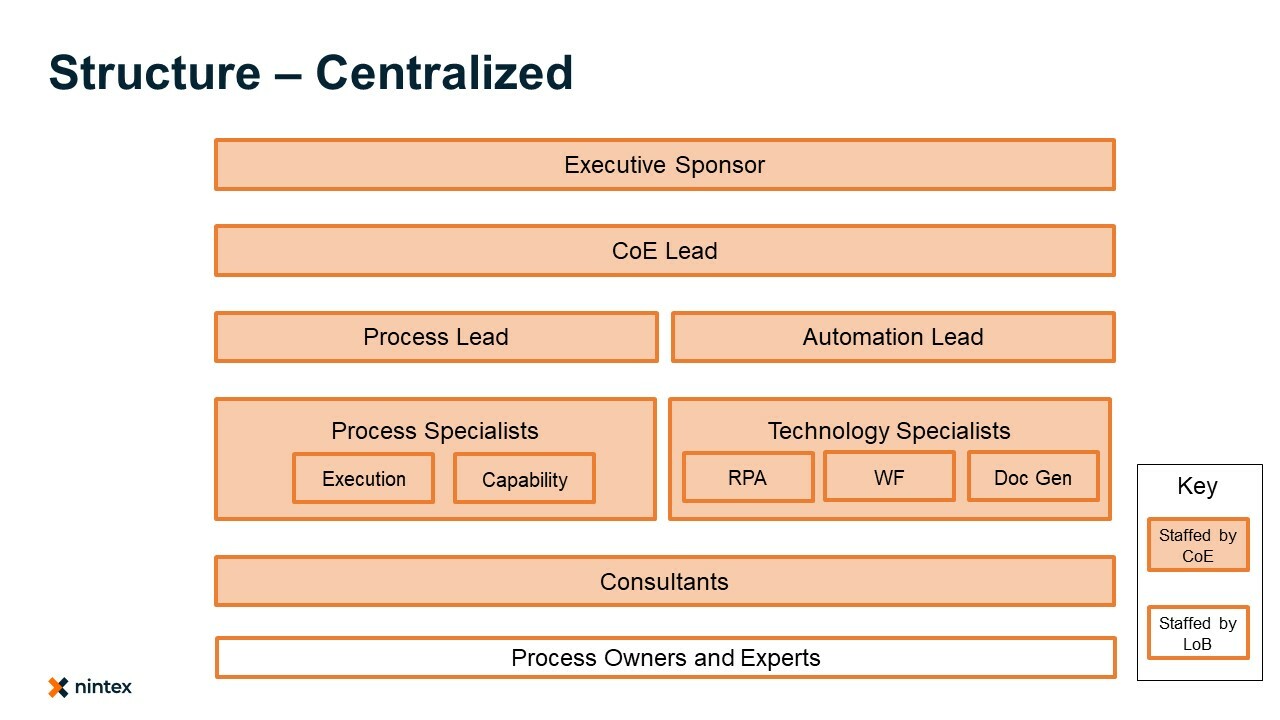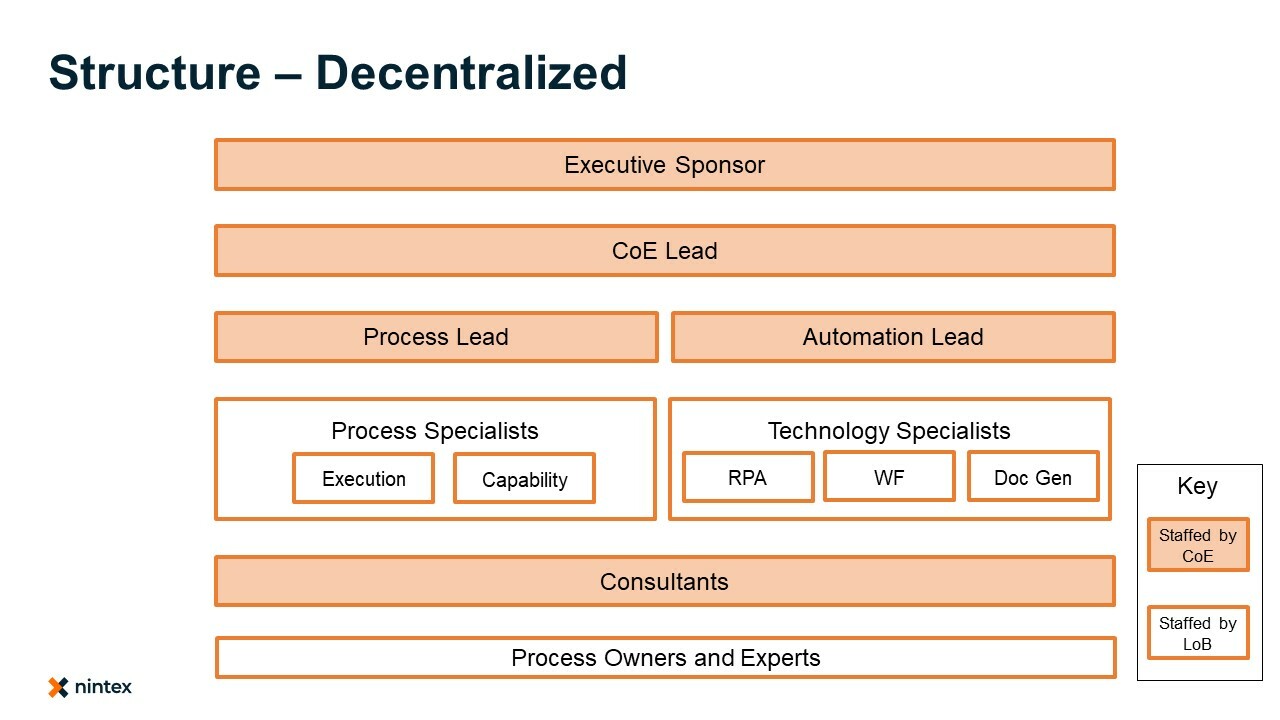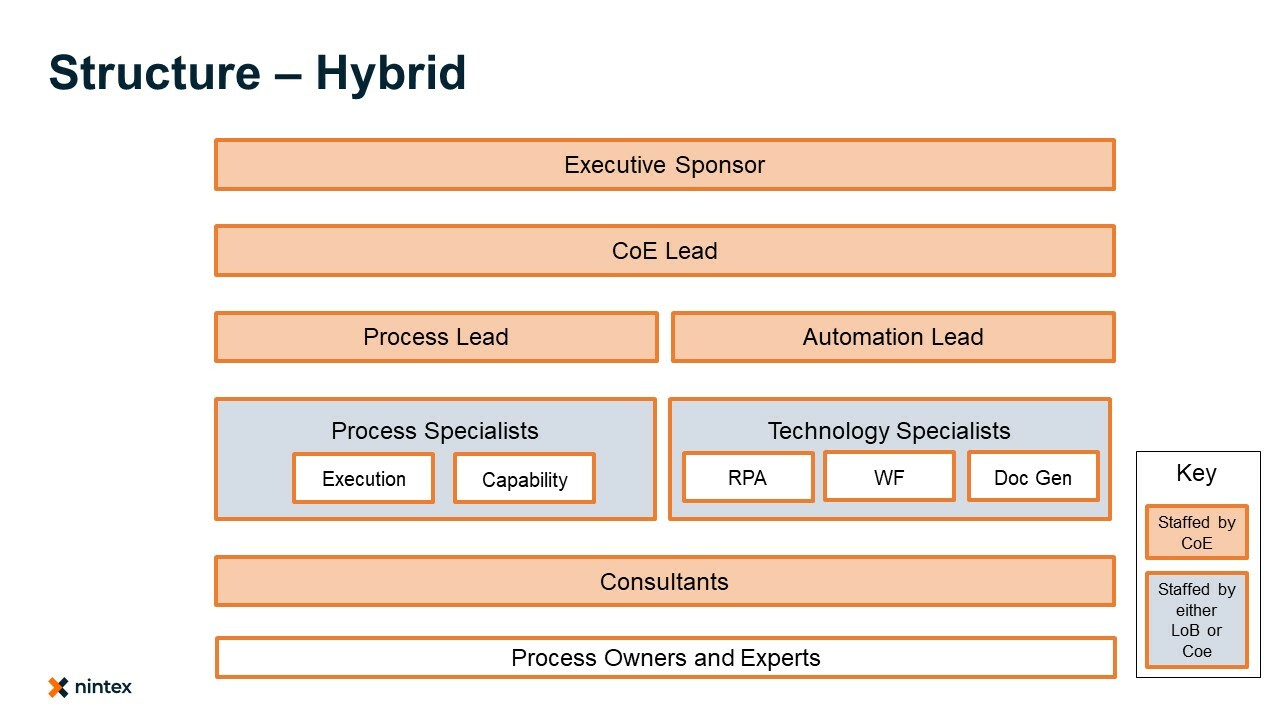After exploring the various delivery models, you might have now decided that the best way for you to run your Operational Excellence (OPEX) program is by setting up a CoE. You’ve got the green light from your leadership team, so the question now becomes where do you start?
To paraphrase the formal definition that I gave for a CoE in my earlier post, What is a CoE?, I called out that a CoE is comprised of highly skilled people who develop and deliver best practices within their area of specialty.
A good starting point then would to be decide who these highly skilled people are, and how they should work together. To do this, you will need to design a structure for your CoE. While there is no one structure that will work for every organization, here is a framework that you can use as a starting point:

Let’s take these one by one:
Executive Sponsor
Your Executive Sponsor needs to take ownership of the ‘Leadership’ component of OPEX. This is done by setting the vision of how OPEX will help the organization achieve its strategic objectives, and by building a culture where everyone in the organization believes that the way that they work is as important as the work that they do. The Executive Sponsor will also need to define what success looks like for the CoE, how ROI will be measured, as well as establish a funding model.
CoE Lead
The CoE Lead has ultimate responsibility for the OPEX program within the organization and must design the strategy for how the CoE will help the business to execute on the vision established by the Executive Sponsor. This will involve coordinating the four elements of OPEX (People, Process, Technology, and Leadership) to execute in harmony as a well-oiled machine.
Process Lead
The Process Lead will take responsibility for the ‘People’ and ‘Process’ components of OPEX. In this capacity they will design the process management framework and governance model, coordinate training, as well as the rollout of the process mapping and improvement programs.
Automation Lead
The Automation Lead will take responsibility for the ‘Technology’ component of OPEX and, in doing so, determine how automation will be used across the organization. When an automation use case request comes to the CoE, the Automation Lead will determine go/ no-go as well as prioritize the use case in their backlog.
Process Specialists
Process specialists are responsible for documenting, analyzing, and improving processes through strategic and continuous improvement initiatives. Process specialists will also be responsible for providing training on process management and improvement to the Line of Business (LoB).
Technology Specialists
Once an automation use case has been approved, the Technology Specialists are responsible for designing, developing, testing, implementing, and maintaining the solution. Where required they may also deliver training to the LoB.
Consultants
Where you lack internal capability or capacity, you may choose to staff elements of your CoE with external consultants. This approach could be used when:
- The scale of your organisation doesn’t justify building all these resources in house
- There is an immediate need for a solution without enough time to build/ acquire the resources
- During peak times, external consultants can provide additional resources to help your CoE scale up and down as needed
As I mentioned, this is merely a framework that should be used as a starting point and modified as needed. While there will be many factors that determine how you modify this framework, a key factor will be the approach that your CoE takes. In my previous post, What is a Center of Excellence (CoE)?, I introduced three approaches that your CoE can take – Centralized, Hybrid, or Decentralized. If you take a Centralized approach, your CoE will take responsibility for each and every element described above. If you take a Decentralized approach, the Line of Business will be responsible for mapping, maintaining, optimizing, and automating their own processes by supplying their own Process and Technology Specialists, while the other roles will be staffed by the CoE. Finally, if you take a hybrid approach, the Process and Technology Specialists will be a combination of people from the CoE and LoB driven by capability and capacity constraints within the LoB; as we discussed in our post What is business maturity and how does influence your CoE?, we expect that a hybrid approach will (for most organizations) eventually end up with the Process Specialists being staffed by the LoB and the Technology Specialists staffed by your CoE.



Now that you’ve set up and staffed your CoE, you’re ready to start mapping and automating processes, right? Well, almost. The next question that you should be asking is ‘just because someone has an idea, should I build it?’. That answer to that is of course a resounding no. Before building a use case, there must be a series of checks and balances to ensure that (a) building the use case will not violate and internal and/ or external regulations and (b) the use case is indeed valuable and contributes to the organization’s overarching OPEX goals. This then will be the topic for next week’s post when we explore what Governance is and why it’s important.
